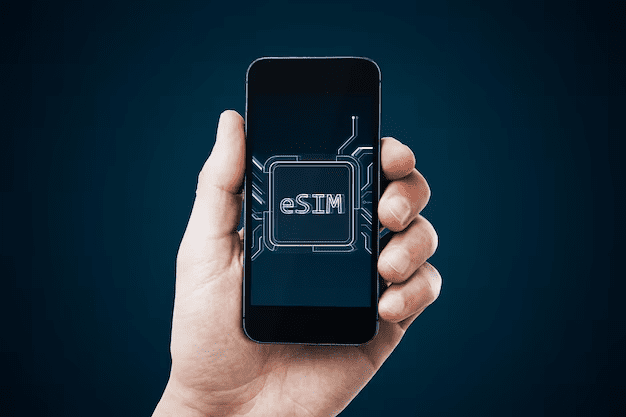The advent of eSIM technology is revolutionising the telecommunications landscape in New Zealand. Unlike traditional SIM cards, an eSIM is a SIM card embedded into a device, enabling users to switch mobile operators with remarkable ease. This seamless integration is attracting a growing number of consumers, offering convenience and flexibility that was previously unattainable with conventional SIM cards. In New Zealand, services for esim in New Zealand are becoming increasingly popular, providing an innovative solution for mobile connectivity.
Understanding eSIM Technology
The term “eSIM” stands for “embedded SIM,” reflecting its design and functionality. Unlike the removable SIM card, eSIMs are soldered onto a device’s motherboard and can cater to multiple network profiles. Users can activate a new service without needing to insert a new SIM card physically, simplifying the process of switching between providers. This is particularly beneficial for frequent travellers and individuals seeking cost-effective options for using local networks.
A Game Changer for Mobile Users
For mobile users in New Zealand, eSIM offers a number of practical advantages. The diminished size of eSIMs frees up space inside mobile devices, allowing manufacturers to incorporate larger batteries or other technological enhancements. Furthermore, the ability to store multiple profiles provides users with the versatility to switch networks without needing to visit a physical store or wait for a new SIM card to be delivered.
Cost Efficiency and Environmental Impact
eSIM technology also plays a role in cost reduction and environmental conservation. By eliminating the need for plastic SIM cards, eSIMs contribute to reducing plastic waste, aligning with global environmental goals. From a financial perspective, consumers can save costs associated with purchasing multiple SIM cards when travelling internationally or switching providers frequently.
Adoption of eSIM in New Zealand
In New Zealand, the uptake of eSIM technology is evident among both consumers and businesses. Providers are recognising the demand for seamless connectivity solutions, which has led to the introduction of competitive eSIM plans. Companies such as Telsim NZ are at the forefront of this technological shift, offering comprehensive solutions for those interested in embracing this modern approach to mobile communication.
eSIM and the Future of Connectivity
The shift to eSIM technology suggests a transformative future for connectivity. As more devices become compatible with eSIM, the potential for seamless software updates and network management increases. Moreover, the integration of eSIMs in wearable technology, such as smartwatches and fitness trackers, facilitates device independence, allowing these gadgets to function without a paired smartphone.
Challenges and Considerations
Despite its benefits, the adoption of eSIM technology comes with certain challenges. Consumers may face initial confusion regarding activation procedures and the compatibility of their devices. Furthermore, the necessity for robust digital security measures is heightened to protect personal information and prevent unauthorised access to network profiles.
Steps to Transition to eSIM
The process of switching to eSIM involves ensuring that your device is eSIM-compatible. Following confirmation, users can generally scan a QR code provided by their carrier to activate the eSIM. It is crucial for consumers to verify network compatibility and understand the terms and conditions of service before completing the transition.
eSIM, a Catalyst for Technological Innovation
The advent of eSIMs also acts as a catalyst for technological innovation within the telecommunications industry. It encourages providers to develop more flexible and inclusive service offerings, focusing on enhanced customer experiences. This development aligns with the broader trend towards digital solutions that accommodate contemporary lifestyle requirements.
The Role of Telsim NZ in eSIM Advancement
Telsim NZ is playing a pivotal role in advancing eSIM technology in New Zealand. By offering cutting-edge eSIM solutions, they provide consumers with the opportunity to enjoy mobile services that are both convenient and efficient. Their commitment to eSIM technology allows for the broadening of service options and further integration into daily life.
eSIM vs Traditional SIM Cards
When comparing eSIMs to traditional SIM cards, the advantages are clear. While traditional SIM cards require physical handling and may present complications when lost or damaged, eSIMs eliminate these concerns. Additionally, eSIMs allow for easy updates and reconfiguration, which can be done remotely without the need for new hardware.
The Global eSIM Perspective
Globally, the trend towards eSIM adoption is accelerating. Major markets, including Europe and North America, are witnessing exponential growth in eSIM utilisation, and New Zealand is poised to follow this trajectory. The increasing support from device manufacturers further propels this trend, making eSIM a standard feature in new communication devices.
Security Considerations
Security remains a primary consideration for eSIM technology. The ability to remotely manage network profiles mandates that providers implement stringent security protocols. Consumers are advised to ensure their devices are updated with the latest security patches and to exercise caution when accessing unknown networks.
Enhancing User Experience
Ultimately, the enhanced user experience offered by eSIM technology is undeniable. With the reduction in dependence on physical SIM cards, users experience zero downtime when switching networks and enjoy a streamlined process that aligns with modern technological expectations.
Conclusion
The deployment of eSIM technology presents significant advantages for New Zealand’s telecommunications sector. With unmatched flexibility, cost savings, and an environmentally friendly approach, eSIMs are set to redefine the way consumers interact with mobile networks. As providers like Telsim NZ continue to innovate, the pathway to widespread eSIM adoption becomes even clearer.



































